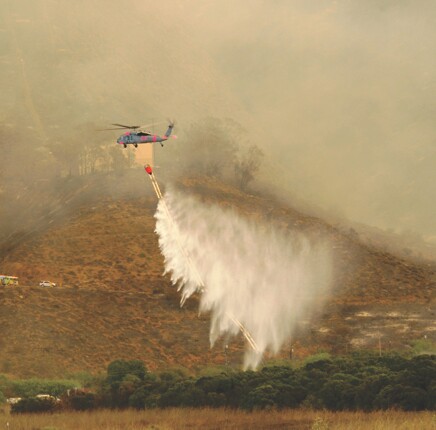Stratospheric air worsens wildfires
DOI: 10.1063/PT.3.2906
Outside the summer months, high atmospheric pressure can develop over the deserts that lie east of the Sierra Nevada. Pushed over the mountains by the pressure, the desert air sinks, then heats up, and blows farther westward across California’s Central Valley. The Santa Ana winds, as the flow is known, exacerbate the risk and spread of fires. Now Andrew Langford of the National Oceanic and Atmospheric Administration and his collaborators have identified a phenomenon that makes the winds’ fire-raising effect even worse: incursions of very dry air from the stratosphere. To make the connection, the researchers studied a wildfire that broke out 75 km west of Los Angeles on 2 May 2013. More than 2100 firefighters, supported by 177 fire engines, 11 helicopters (one of which is shown in the photo), and 8 air tankers, battled the blaze before rain extinguished it four days later. The ozone concentration in the stratosphere, too low to affect combustion, significantly exceeds that in the troposphere. By using a tool developed to predict ozone concentrations, Langford and his collaborators found a layer of stratospheric air that folded downward through the troposphere almost to the surface. As the dry air sank, it heated up and cleared the skies. The resulting ground temperature when the fire broke out was 36.7 °C; the relative humidity, 1%. Such stratospheric incursions are common above the West Coast. Although their effects cannot be mitigated, their arrival can now be predicted, thanks to the ozone’s telltale presence. (A. O. Langford, R. B. Pierce, P. J. Schultz, Geophys. Res. Lett. 42, 6091, 2015, doi:10.1002/2015GL064964

